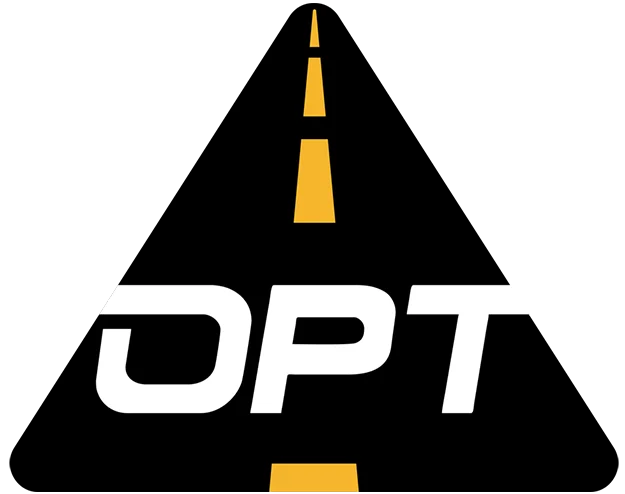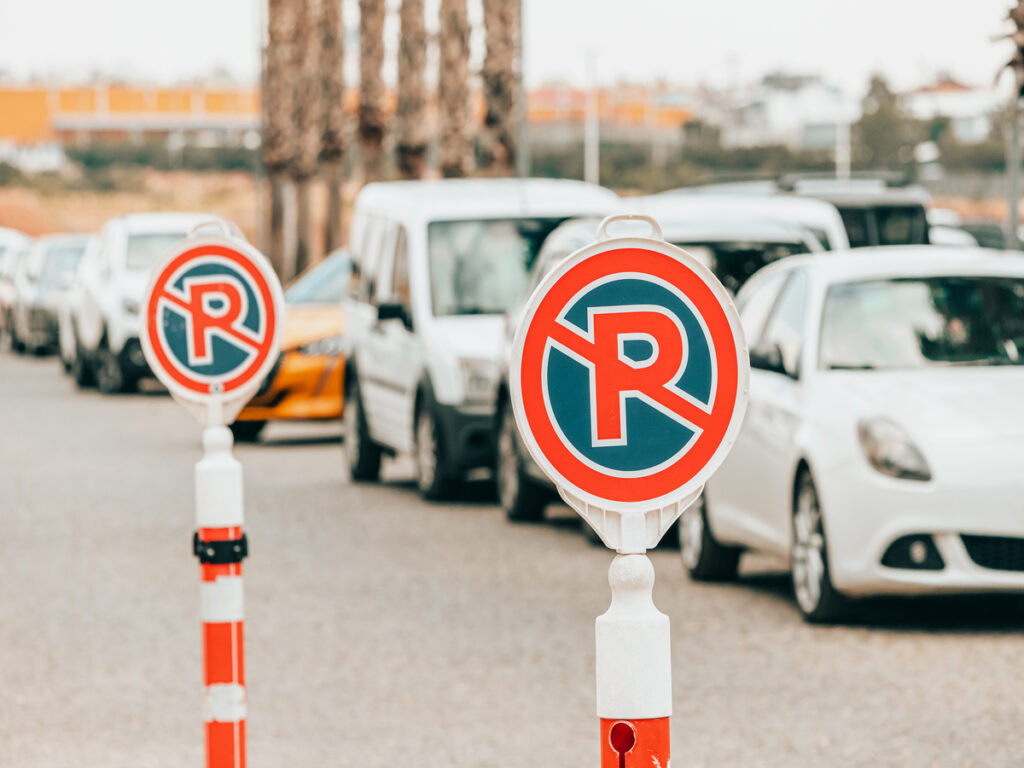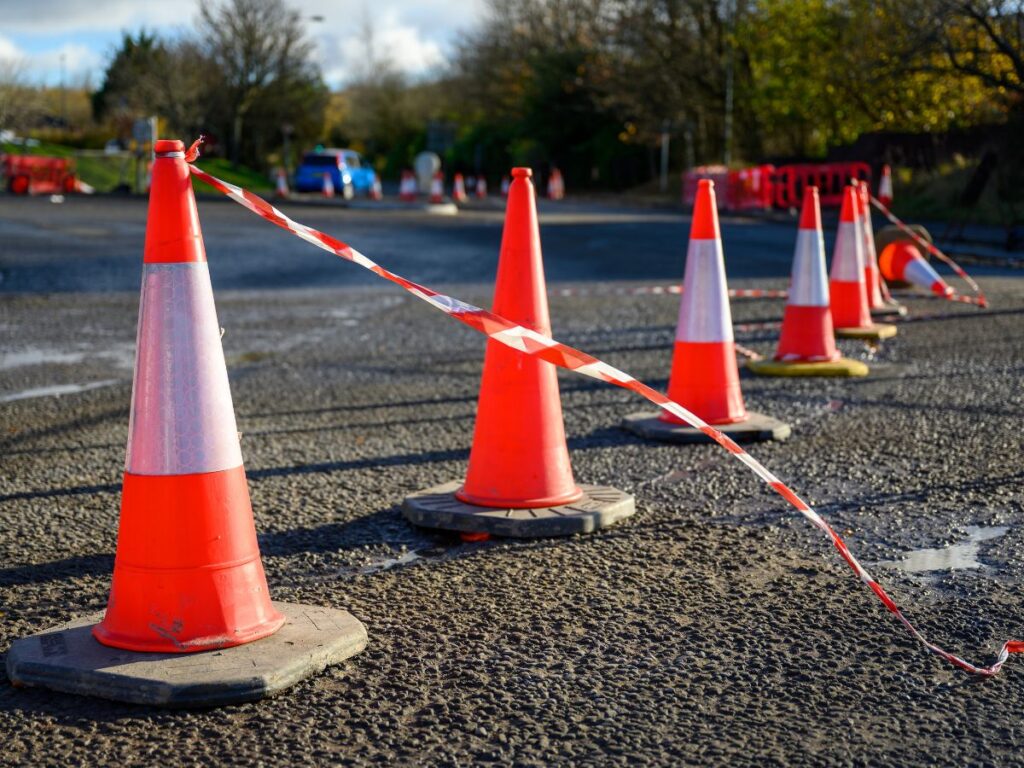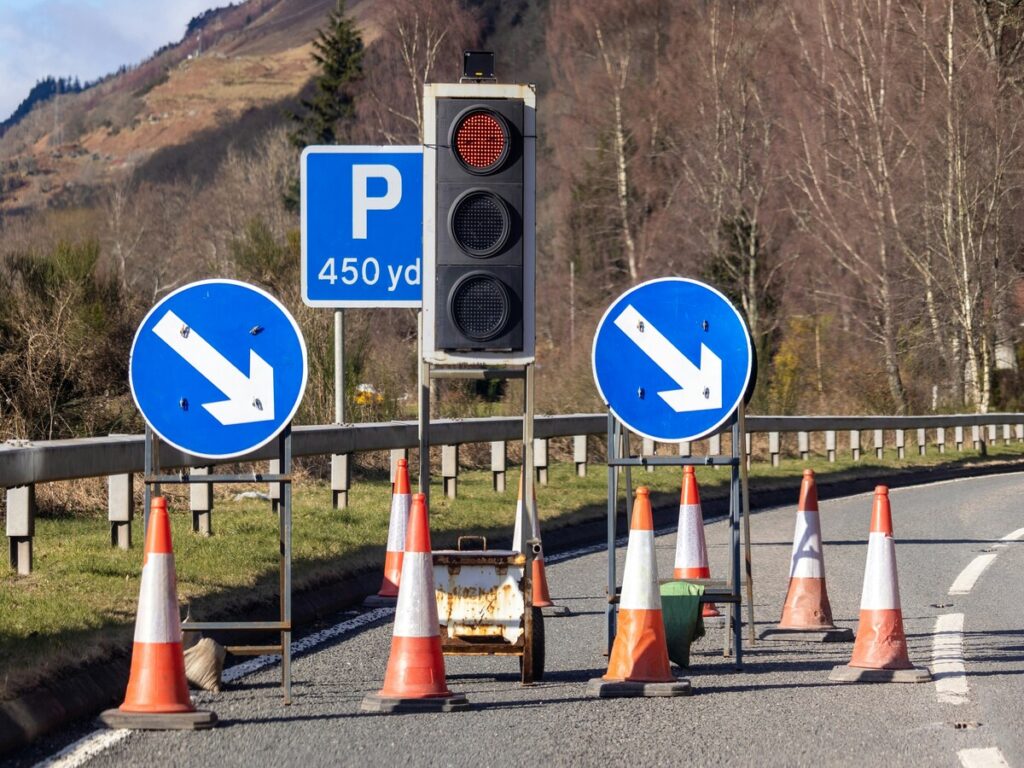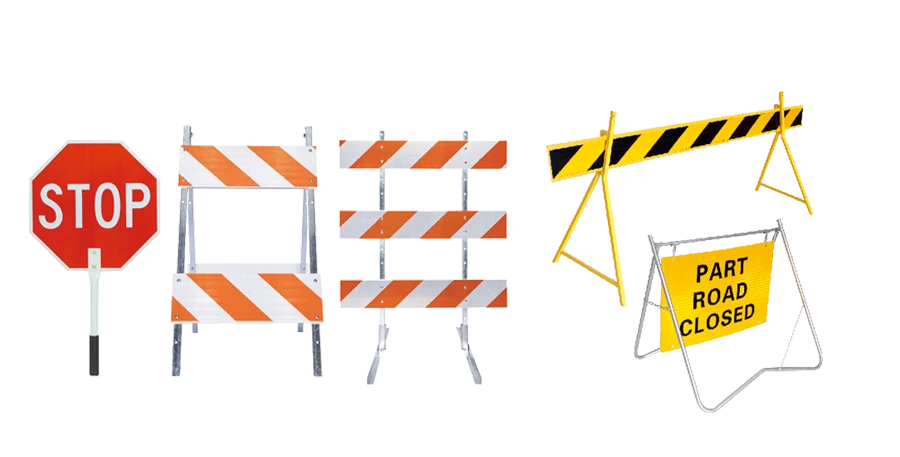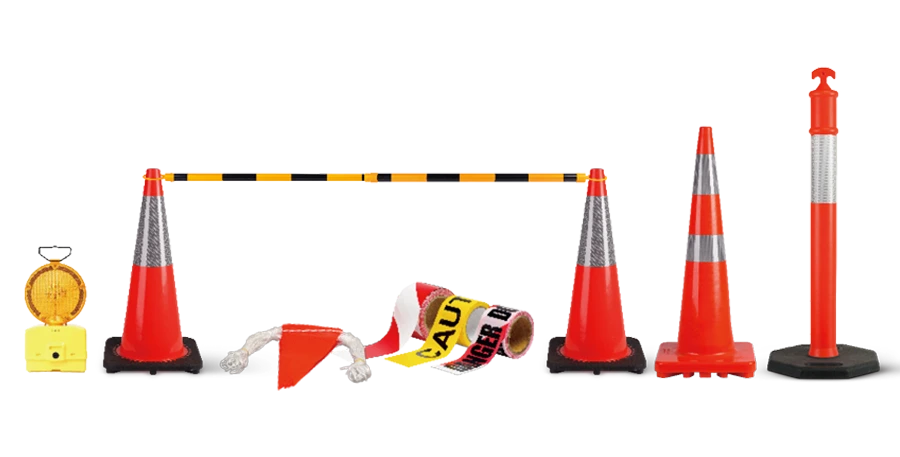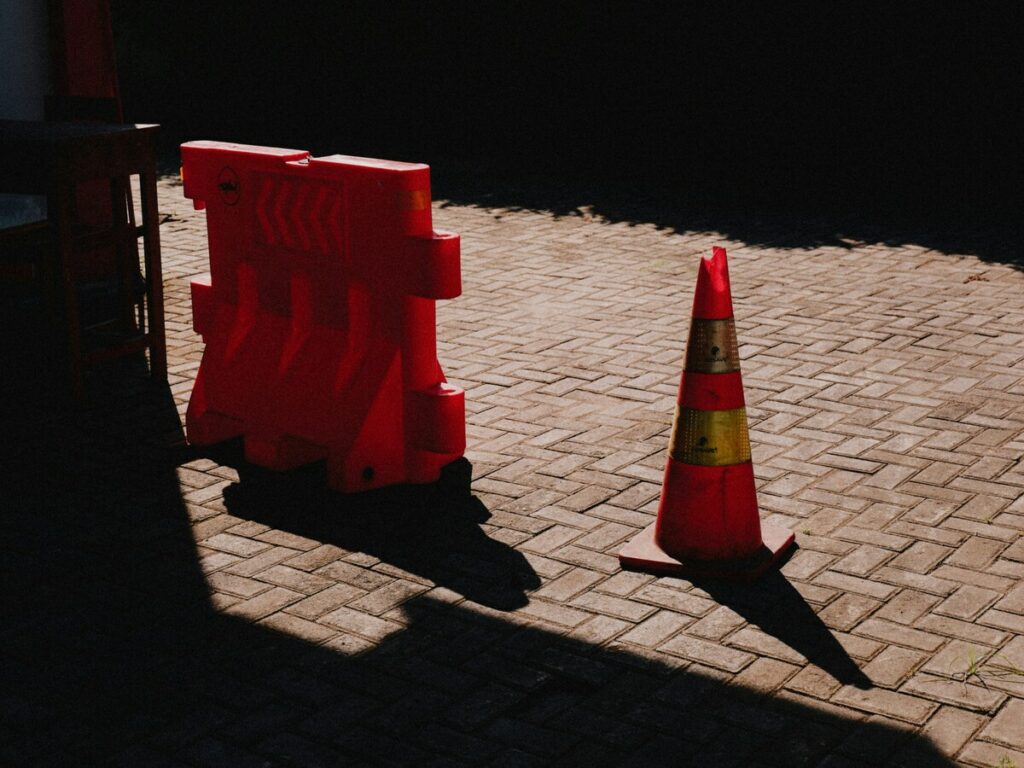
निर्माण सुरक्षा शंकु सड़क निर्माण क्षेत्रों को सुरक्षित रखने में महत्वपूर्ण भूमिका निभाते हैं. आप स्पष्ट सीमाएं बनाने के लिए इन शंकु पर भरोसा करते हैं, यातायात का मार्गदर्शन करें, और दुर्घटनाओं को रोकें. उनके चमकीले रंग और रणनीतिक प्लेसमेंट सुनिश्चित करते हैं कि ड्राइवर और श्रमिक संभावित खतरों से अवगत रहें.
Geotechnical engineers contribute significantly to enhancing safety protocols in these projects. They conduct site investigations to analyze soil and groundwater conditions. They design stable foundations to prevent structural failures. They also assess slope stability to avoid landslides and erosion. By identifying risks and implementing mitigation strategies, they help maintain safety and efficiency on construction sites.
Safety tips: Always use construction safety cones to mark hazardous areas and protect workers. ओपीटी यातायात शंकु पर हस्ताक्षर करता है are a reliable choice, offering high visibility to clearly mark danger zones. Their sturdy build and reflective features make them perfect for tough construction sites, helping to keep workers safe and aware.
Introduction to Roadway Construction and Geotechnical Engineering
The Role of Geotechnical Engineering in Road Design
You play a critical role in ensuring the success of road construction projects. Your work begins with a detailed project assessment and the creation of preliminary plans. You develop an investigation plan to determine where and how many soil samples to collect. After securing environmental clearance, you conduct fieldwork to gather these samples. प्रयोगशाला में, you analyze the soil’s density, moisture content, and other properties. This data helps you make recommendations to pavement designers, ensuring the roadway can handle expected loads without failure.
Your responsibilities extend beyond soil analysis. You design stable foundations that support the road and prevent structural issues. पहाड़ी क्षेत्रों में, you assess slope stability and create systems to retain earth and prevent landslides. When soil conditions are unsuitable for construction, you apply ground improvement techniques to enhance its properties. You also evaluate environmental risks, such as groundwater contamination, and develop strategies to mitigate these risks. इन कारकों को संबोधित करके, you ensure the road construction process remains safe and efficient.
Key Geotechnical Challenges in Pavement Construction
Road construction often presents unique challenges. Soil stability is one of the most common issues. Different soil types respond differently to loads, which can lead to foundation failures if not properly addressed. High groundwater levels also complicate excavation and foundation work. They can cause soil erosion and make the ground unstable, दुर्घटनाओं का खतरा बढ़ रहा है.
Unpredictable subsurface conditions add another layer of complexity. Buried debris or unexpected rock layers can delay your project and increase costs. These challenges require careful planning and quick problem-solving to keep the construction process on track. By identifying these risks early, you can implement solutions that minimize delays and ensure the safety of workers and drivers.
The Significance of Traffic Cones in Road Construction Projects

Traffic Cones as Safety Tools on Construction Sites
Traffic cones play a crucial role in maintaining safety on any construction site. You rely on them to create clear boundaries that separate workers from oncoming traffic. Their bright orange color and reflective collars ensure high visibility during both day and night. This visibility helps drivers identify hazardous areas and adjust their speed or direction accordingly. काम क्षेत्रों को चिह्नित करके, traffic cones reduce the risk of accidents and protect workers from potential harm.
These construction safety cones also serve as an essential warning system. They alert drivers to changes in road conditions, जैसे कि लेन बंद या चक्कर लगाते हैं. This guidance minimizes confusion and keeps traffic flowing smoothly around the construction site. इसके अतिरिक्त, construction safety cones create buffer zones that act as a protective barrier between workers and vehicles. This separation is vital for ensuring the safety of everyone involved in the project.
Traffic Cone Usage for Work Zone Management
Effective work zone management depends heavily on the strategic use of traffic cones. You use them to guide vehicles safely through or around construction zones. Proper placement of construction safety cones helps delineate changes in traffic patterns, such as merging lanes or temporary detours. This visual guidance reduces the likelihood of collisions and ensures a safer environment for both motorists and workers.
Traffic cones also help you isolate hazardous areas within the work zone. उदाहरण के लिए, you can use them to mark off sections with unstable soil or ongoing excavation. This prevents unauthorized access and keeps workers and equipment safe. Adhering to traffic control regulations when placing construction safety cones is essential for maximizing their effectiveness. इन दिशानिर्देशों का पालन करके, you enhance safety and maintain order within the work zone.
In addition to construction projects, cones are versatile tools used in various scenarios. Police and traffic control personnel use them to direct traffic during accidents or road closures. Event organizers rely on them to manage crowds and designate restricted areas. Their adaptability makes them indispensable for maintaining safety and organization in diverse settings.
बख्शीश: Always ensure construction safety cones are made of टिकाऊ सामग्री like PVC and include reflective collars for nighttime visibility.
Geotechnical Considerations and Traffic Cone Placement
Protecting Workers from Unstable Soil and Subgrade Issues
Unstable soil and subgrade conditions pose significant risks during road construction. You must address these challenges to ensure worker safety and project success. Traffic cones serve as an effective tool for marking hazardous areas, helping you create a safer work environment. By placing construction safety cones around zones with unstable soil, you can alert workers and equipment operators to potential dangers. This simple step reduces the likelihood of accidents caused by unexpected ground shifts or collapses.
Wet or loose soil often becomes a problem during excavation. You can use cones to highlight these areas, preventing workers from entering unsafe zones. This precaution is especially important when heavy machinery operates nearby. Clear markings help operators avoid unstable ground, minimizing the risk of equipment tipping over. इसके अतिरिक्त, construction safety cones act as a visual reminder for workers to follow safety protocols when working near compromised subgrades.
Regular hazard assessments allow you to identify unstable areas early in the project. Once identified, you can use traffic cones to mark these zones and implement corrective measures. This proactive approach ensures that your team remains aware of potential risks throughout the construction process.
Importance of Proper Cone Placement in Areas of Soil Disturbance
Proper cone placement is essential in areas where soil has been disturbed. उत्खनन, grading, and other construction activities often weaken the ground, creating potential hazards. You can use traffic cones to define the boundaries of these disturbed areas, keeping workers and equipment at a safe distance. This practice not only enhances safety but also improves site organization.
जब शंकु डालते हैं, ensure they are visible from all directions. Align them in straight lines or patterns that clearly indicate restricted zones. उदाहरण के लिए, you can use construction cones to mark the edges of trenches or excavation pits. This helps prevent accidental falls and keeps the worksite orderly.
भारी यातायात वाले क्षेत्रों में, strategic cone placement becomes even more critical. You can use construction cones to guide vehicles away from disturbed soil, दुर्घटनाओं के जोखिम को कम करना. Proper placement also helps maintain smooth traffic flow, minimizing disruptions to the construction schedule. By prioritizing accurate cone placement, you create a safer and more efficient work environment.
Managing Road Construction Risks with Traffic Cones
Cones for Navigating Wet, Unstable, or Poor-Quality Subgrades
गीला, unstable, or poor-quality subgrades can create significant risks during road construction. These conditions often lead to uneven surfaces, making it difficult for workers and machinery to operate safely. You can use traffic cones to highlight these hazardous areas, ensuring everyone on-site remains aware of potential dangers. By marking these zones, you reduce the chances of accidents caused by equipment tipping over or workers slipping on unstable ground.
Traffic cones also help you manage risks during adverse weather conditions. बारिश can saturate the soil, making it soft and prone to collapse. Placing cones around these areas prevents workers and vehicles from entering unsafe zones. This precaution is especially important when heavy machinery is in use, as unstable subgrades can cause equipment to sink or lose balance.
In addition to marking hazards, construction cones play a vital role in guiding vehicles through rough terrain. You can use them to redirect the flow of traffic away from areas with raised manhole covers, गड्ढे, या तीखे मोड़. This not only enhances safety but also keeps the construction process running smoothly. Incorporating construction cones into your temporary traffic control plan ensures a safer and more organized work environment.
बख्शीश: Regularly inspect cone placements to ensure they remain effective, especially after heavy rain or high winds.
Using Cones to Mark Environmental Impact Zones
Environmental impact zones require careful management during road construction. These areas often include sensitive ecosystems, such as wetlands or habitats for protected species. You can use traffic cones to create buffer zones that separate workers and equipment from these critical areas. This helps minimize soil erosion and prevents damage to the surrounding environment.
Marking environmental impact zones with construction cones also ensures compliance with regulations. उदाहरण के लिए, construction cones can highlight areas where construction activities are restricted, reducing the risk of accidental violations. Their bright orange color makes them easy to spot, even in busy work zones.
इसके अतिरिक्त, construction cones help you maintain safety by isolating hazardous situations. उदाहरण के लिए, they can mark areas with low shoulders or stalled vehicles, श्रमिकों और ड्राइवरों को सुरक्षित रखना. By using construction cones strategically, you protect both the environment and the people involved in the project.
टिप्पणी: Always include environmental considerations in your temporary traffic control plan to ensure sustainable construction practices.
Best Practices for Using Traffic Cones in Pavement Projects
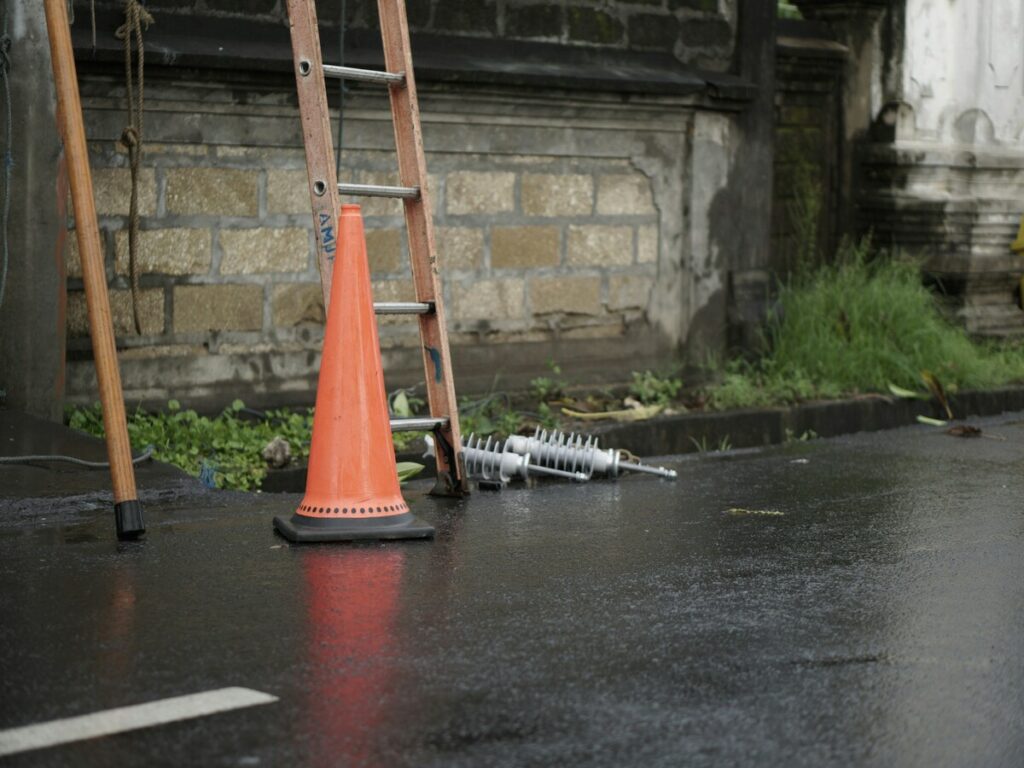
Strategic Placement for Optimal Safety
Strategic placement of traffic cones ensures the safety of workers and motorists in pavement projects. You should always use cones made of PVC to prevent vehicle damage and ensure durability. Their bright orange color enhances visibility, while reflective collars make them effective for nighttime use. To withstand adverse weather conditions, cones must be heavy enough to remain stable.
When planning cone placement, consider the size of the work zone. Larger sites require more construction road cones to provide clear visual communication to drivers. Begin placing construction road cones approximately 250 feet from the start of the construction zone. This distance gives drivers enough time to adjust their speed and direction. Use construction road cones to create buffer zones that separate workers from oncoming traffic. These zones act as protective barriers, दुर्घटनाओं के जोखिम को कम करना.
Adjust the layout of construction road cones based on the specific conditions of the job site. उदाहरण के लिए, in areas with sharp turns or uneven terrain, place cones closer together to guide vehicles safely. Proper positioning communicates to drivers where to go, ensuring smooth traffic flow and enhancing safety for everyone involved.
Safety tips: Regularly inspect construction road cones to ensure they remain in place, especially after strong winds or heavy rain.
How to Use Cones to Minimize Construction Delays
Traffic cones play a vital role in minimizing construction delays by organizing work zones and directing traffic efficiently. You can use cones to delineate changes in traffic patterns, जैसे कि लेन बंद या चक्कर लगाते हैं. This clear visual communication reduces confusion and keeps vehicles moving smoothly around the construction site.
To avoid delays, ensure construction road cones are placed in straight lines or patterns that are easy to follow. Use them to mark restricted areas, such as excavation pits or unstable soil zones. This prevents unauthorized access and keeps workers focused on their tasks. उच्च-यातायात क्षेत्रों में, cones help manage congestion by guiding vehicles into designated lanes.
Cones also enhance visibility during low-light conditions, ensuring drivers can navigate safely at night. By maintaining proper cone placement and adhering to safety standards, you can reduce the likelihood of accidents and keep the project on schedule.
Safety tips: Use construction road cones with reflective collars to improve nighttime visibility and prevent delays caused by accidents.
Compliance with Safety and Environmental Regulations
Meeting AASHTO and NCHRP Guidelines for Road Construction Safety
Adhering to safety guidelines is essential for maintaining order and minimizing risks in road construction. The American Association of State Highway and Transportation Officials (AASHTO) और यह राष्ट्रीय सहकारी राजमार्ग अनुसंधान कार्यक्रम (एनच्रपी) provide clear standards for traffic cone usage. You must ensure that all cones used on-site meet these requirements to create a safe work environment.
Traffic cones must be orange to ensure they stand out in various lighting conditions. They should be made of PVC, which prevents vehicle damage and ensures durability. रात के समय उपयोग के लिए, construction road cones must include a reflective collar to enhance visibility. Their weight should be sufficient to withstand wind and other weather conditions, keeping them stable in high-risk areas. Shorter construction road cones, कम से कम 18 इंच लंबा, are suitable for low-speed zones, while 28-inch cones are recommended for high-speed areas to improve visibility and safety.
Proper placement of cones is equally important. You should position them strategically to guide traffic and protect workers. Begin placing construction road cones well before the work zone to give drivers enough time to adjust their speed and direction. Following these guidelines ensures compliance with AASHTO and NCHRP standards while enhancing safety for everyone on-site.
Reducing Environmental Risks with Effective Traffic Cone Use
Traffic cones play a vital role in reducing environmental risks during construction. You can use them to create buffer zones that separate workers and equipment from sensitive areas, such as wetlands or habitats for protected species. These buffer zones help minimize soil erosion and prevent accidental damage to the surrounding environment.
The size of the buffer zone depends on traffic speed. उच्च गति वाले क्षेत्रों में, wider zones provide better protection for both workers and the environment. Cones also help you manage hazardous situations, such as spills or unstable ground, by clearly marking restricted areas. This reduces the likelihood of accidents that could harm the environment.
Using construction road cones as part of your high visibility equipment ensures that both workers and drivers remain aware of environmental impact zones. This proactive approach not only protects natural resources but also ensures compliance with environmental regulations. By integrating construction road cones into your traffic control plan, you contribute to sustainable construction practices while maintaining safety.
Traffic cones remain indispensable in geotechnical engineering, ensuring safety and efficiency in road construction projects. वे श्रमिकों की रक्षा करते हैं, यातायात का मार्गदर्शन करें, and mark hazardous zones, making them vital tools for maintaining order on-site. सर्वोत्तम प्रथाओं का पालन करके, you can further enhance safety protocols.
- Use construction road cones for roadside emergencies to alert motorists.
- Control movement in crowded areas by sectioning off zones.
- Guide event traffic and organize parking for smooth operations.
- Identify and block off children’s play areas to improve visibility.
आगे देख रहा, innovations like smart traffic cones with IoT sensors and eco-friendly designs will revolutionize construction safety. Space-saving options, such as foldable cones, will simplify transport and storage. As infrastructure projects expand globally, traffic cones will continue to play a critical role in creating safer roads.
